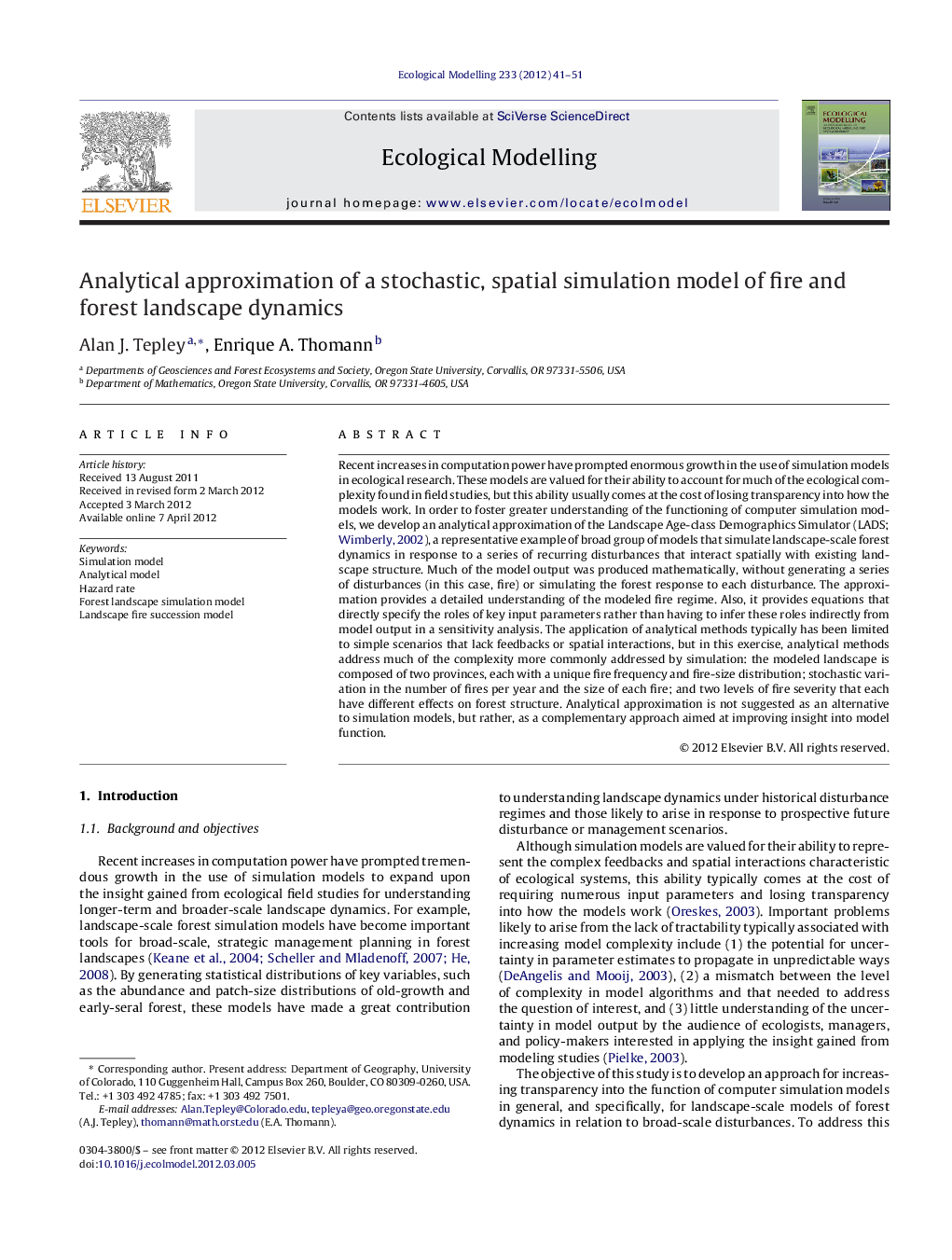| Article ID | Journal | Published Year | Pages | File Type |
|---|---|---|---|---|
| 4376480 | Ecological Modelling | 2012 | 11 Pages |
Recent increases in computation power have prompted enormous growth in the use of simulation models in ecological research. These models are valued for their ability to account for much of the ecological complexity found in field studies, but this ability usually comes at the cost of losing transparency into how the models work. In order to foster greater understanding of the functioning of computer simulation models, we develop an analytical approximation of the Landscape Age-class Demographics Simulator (LADS; Wimberly, 2002), a representative example of broad group of models that simulate landscape-scale forest dynamics in response to a series of recurring disturbances that interact spatially with existing landscape structure. Much of the model output was produced mathematically, without generating a series of disturbances (in this case, fire) or simulating the forest response to each disturbance. The approximation provides a detailed understanding of the modeled fire regime. Also, it provides equations that directly specify the roles of key input parameters rather than having to infer these roles indirectly from model output in a sensitivity analysis. The application of analytical methods typically has been limited to simple scenarios that lack feedbacks or spatial interactions, but in this exercise, analytical methods address much of the complexity more commonly addressed by simulation: the modeled landscape is composed of two provinces, each with a unique fire frequency and fire-size distribution; stochastic variation in the number of fires per year and the size of each fire; and two levels of fire severity that each have different effects on forest structure. Analytical approximation is not suggested as an alternative to simulation models, but rather, as a complementary approach aimed at improving insight into model function.
► An analytical approximation was developed for a simulation model of fire and forest dynamics. ► The approximation translates the model into a tractable form and clarifies roles of input parameters. ► The approximation reproduces much of the results of previous publications using the model. ► Combining simulation and analytical modeling approaches is suggested to clarify model function.
